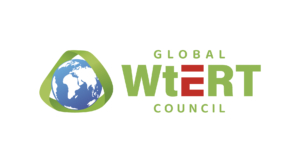M.S. Thesis: Assessment of “Wasteaware” indicator and its application in New York City, Hilo (HI), and Cairo.
By Yang Rui
Advisors: Dr. A.C. (Thanos) Bourtsalas and Prof. Nickolas J. Themelis
Department of Earth and Environmental Engineering
Fu Foundation School of Engineering & Applied Science
Columbia University
December 2018
The problem: One of the main challenges of sustainable waste management is the lack of reliable data, and robust indicators able to monitor the progress of cities. A novel methodology was developed by Dr. Wilson that divides several indicators of cities into several sub-indicators. The ‘wasteaware’ indicator provides an efficient method to compare solid waste management systems of different cities.
The aim of the research: The study uses the ‘wasteaware’ indicator on New York City, Hilo, and Cairo, which are three cities from the North and the South and are all representative in solid waste management in their own way. The aim of the study is to come up with a score for each sub-indicator.
The methodology used: the methodology to measure solid waste management in general has two aspects, which are the physical and governance. The well-developed methodology has several sub-indicators under the prior indicator, which makes the study more comprehensive and robust. On top of that, the methodology also evaluates the city’s income level and population and assesses how those affect the performance of the solid waste management. The last step of the methodology is to put all the information of the three cities in one table and create a comparative radar diagram to visualize the performances of the three cities in each sub indicator.
The key findings: It is found that New York City and Hilo perform better than Cairo from a big picture. However, Cairo does a fairly good job in the physical aspect of solid waste management due to the informal waste collection group Zabbaleen, which does a significant job even better than New York City. However, Cairo scores relatively low in the governance aspect, since the city lacks a top to bottom strategy/policy to implement solid waste management, and is poorly organized in public awareness, financial sustainability, and the like. New York City and Hilo perform well in general, but New York City has a better performance in the governance aspect than in the physical aspect, whereas Hilo performs equally in the physical aspect and the governance aspect.
